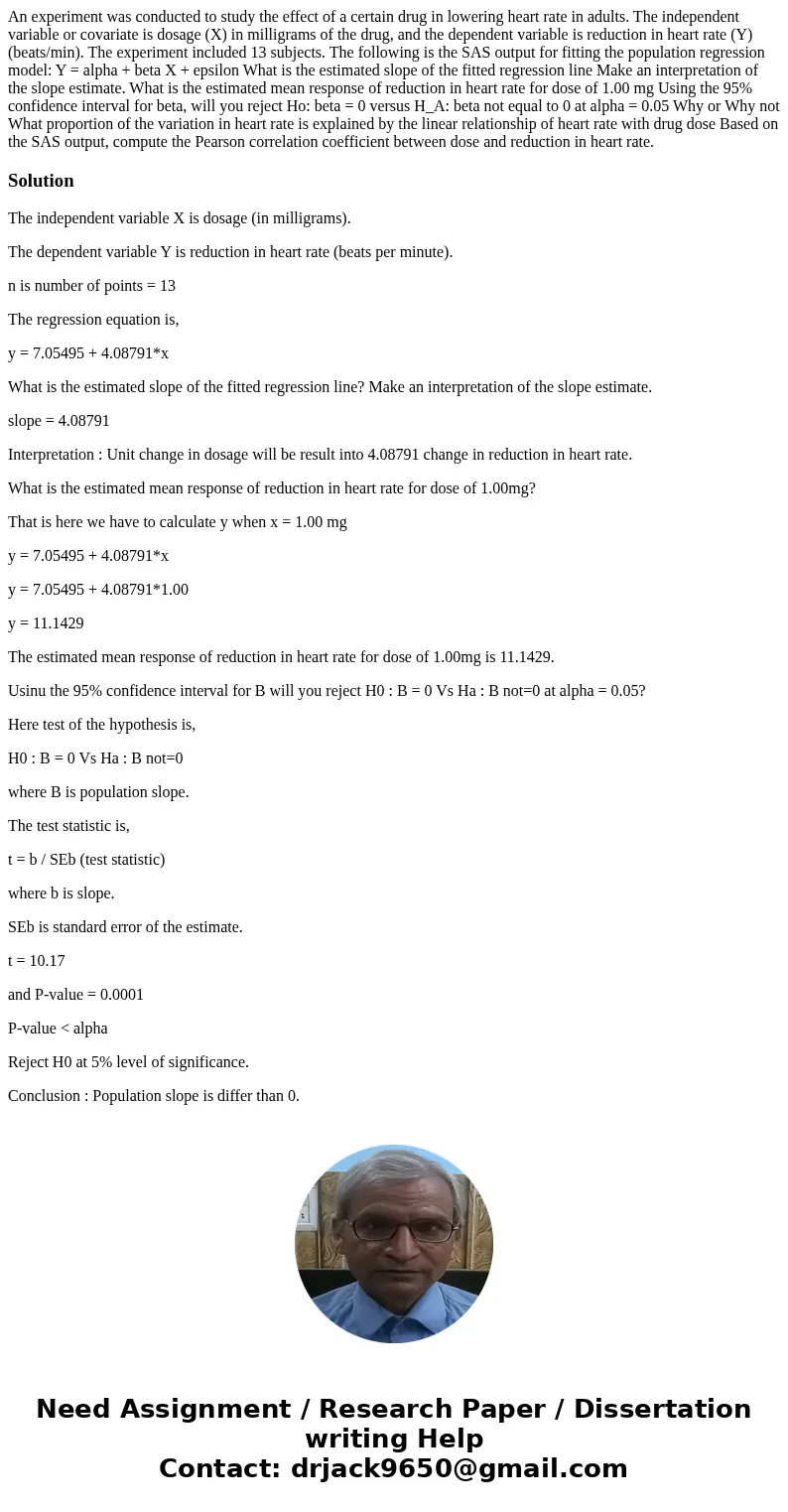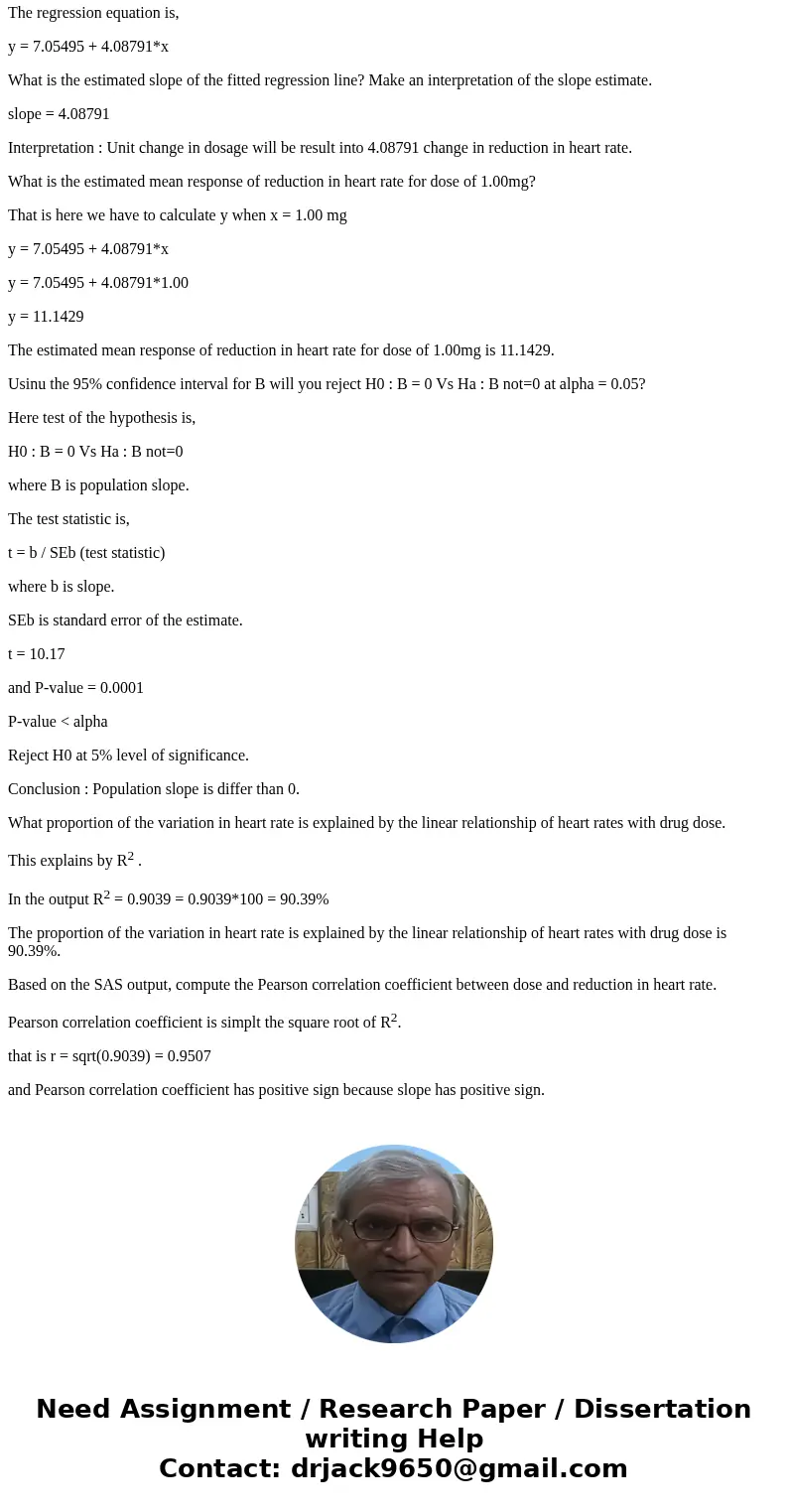An experiment was conducted to study the effect of a certain
Solution
The independent variable X is dosage (in milligrams).
The dependent variable Y is reduction in heart rate (beats per minute).
n is number of points = 13
The regression equation is,
y = 7.05495 + 4.08791*x
What is the estimated slope of the fitted regression line? Make an interpretation of the slope estimate.
slope = 4.08791
Interpretation : Unit change in dosage will be result into 4.08791 change in reduction in heart rate.
What is the estimated mean response of reduction in heart rate for dose of 1.00mg?
That is here we have to calculate y when x = 1.00 mg
y = 7.05495 + 4.08791*x
y = 7.05495 + 4.08791*1.00
y = 11.1429
The estimated mean response of reduction in heart rate for dose of 1.00mg is 11.1429.
Usinu the 95% confidence interval for B will you reject H0 : B = 0 Vs Ha : B not=0 at alpha = 0.05?
Here test of the hypothesis is,
H0 : B = 0 Vs Ha : B not=0
where B is population slope.
The test statistic is,
t = b / SEb (test statistic)
where b is slope.
SEb is standard error of the estimate.
t = 10.17
and P-value = 0.0001
P-value < alpha
Reject H0 at 5% level of significance.
Conclusion : Population slope is differ than 0.
What proportion of the variation in heart rate is explained by the linear relationship of heart rates with drug dose.
This explains by R2 .
In the output R2 = 0.9039 = 0.9039*100 = 90.39%
The proportion of the variation in heart rate is explained by the linear relationship of heart rates with drug dose is 90.39%.
Based on the SAS output, compute the Pearson correlation coefficient between dose and reduction in heart rate.
Pearson correlation coefficient is simplt the square root of R2.
that is r = sqrt(0.9039) = 0.9507
and Pearson correlation coefficient has positive sign because slope has positive sign.


 Homework Sourse
Homework Sourse